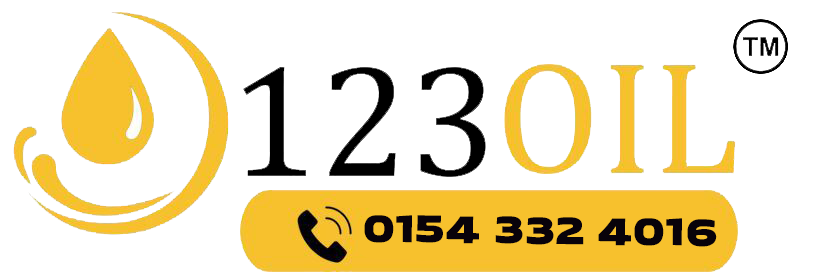Kerosene, also known as heating oil, is commonly used for heating purposes in several households and business premises that do not have a direct connection to the main gas network.
This article provides detailed information about kerosene oil’s discovery, production, uses, fuel grades, and advantages.
Discovery of Kerosene Oil
A famous Persian scholar, Muhammad ibn Zakariya al-Razi (Razi), wrote about the distillation process for the production of kerosene oil. He mentioned two methods for its production in his book ‘Book of Secrets’ (Kitab-al-Asrar). Then, during 1368-1644 (Chinese Ming Dynasty), the Chinese started to make kerosene oil by extracting and purifying petroleum for use as a lamp fuel. In 1846, a Canadian geologist, Abraham Pineo Gesner, claimed to give his first public demonstration of a new process to produce an exceptional quality fuel for lamps.
What is Kerosene Oil
The name kerosene is derived from the Greek word ‘keroselaion,’ which means wax-oil. The Canadian geologist Abraham Pineo Gesnger suggested it. In 1854, he registered a trademark on the name.
Kerosene oil is a clear, flammable liquid with a non-viscous consistency. For centuries, it has been used in many houses and industries as a fuel for heat, light, and power. This versatile fuel has several other uses, offering greater reliability and robust heating solutions.
It has several other names, such as:
- Kero
- C2 Kro
- Fuel Oil
- Heating Oil
- Burning Oil
- 28-Second Burning Oil
Production of Kerosene Oil
Kerosene oil is a petroleum product prepared by separating compounds from crude oil. It is produced by a simple process of fractional distillation, which leaves a clear and thin oil of 0.81g/cm3 density. The density of kerosene plays a vital role, as greater fuel density means greater fuel mass that can be conveniently stored in a given tank. This leads to more fuel pumping, offering huge benefits to industry owners.
Petroleum is made up of a mixture of hydrocarbons known as alkanes. Its main constituents are branched-chain paraffin, ring-shaped cycloparaffins, and saturated straight-chain hydrocarbons. Petroleum is extracted from beneath the Earth’s surfaces at a high temperature of 150 to 275°C. Then, the petroleum is broken down into several fuels, such as butane, fuel oil, kerosene, lubricating oil, and propane, through fractional distillation. Kerosene oil is then extracted as a thin and clear fluid.
Uses of Kerosene Oil
With the advent of electricity and gas, kerosene oil is still used in several homes and businesses for heating and lighting. Kerosene oil comes at cost-effective rates and has diverse uses as:
- Jet Fuel
- Heating Oil
- Cleaning Agent
- Fuel for Cooking
- Fuel for Oil Lamps
Kerosene has been used as a traditional remedy to kill head lice, but health agencies warn people to avoid using it as it can cause burns and serious illnesses to humans. If ingested, kerosene can be harmful and even fatal in extreme conditions. It is also used as a pesticide to kill insects, including bed bugs. Kerosene can also be added in stagnant waters to kill mosquito larvae, but it is dangerous for humans.
Moreover, kerosene is also used as a cleaning agent for bicycle and motorcycle chains before relubricating them. It is also used as a barrier fuel for separating fuels to avoid contamination while pumping. This fuel is dangerous in the entertainment industry during fire performances, such as fire breathing, dancing, and juggling. Furthermore, kerosene oil is used as a fuel in jet engines by mixing it with oxygen to deliver huge power.
Fuel Grades of Kerosene Oil
According to the British Standard BS 2869 specifications, there are two grades of kerosene, and each has its distinct uses, such as:
- BS 2869 Class C1 is a lighter distillate and can be utilised in lanterns.
- BS 2869 Class C2 is a heavier distillate. It is commonly used as domestic heating oil and serves other commercial purposes.
Advantages of Using Kerosene Oil
Kerosene oil is used for cleaning, powering rockets, and entertaining people on the stage. Its popularity is due to its remarkable reliability and cost-effectiveness.
This fuel has a low carbon monoxide risk and is less likely to cause an explosion or fire due to a lack of fuel vapour. However, it emits fumes, and continuous exposure to them can cause dizziness or neurological and kidney damage in severe cases. Thus, kerosene can be touched safely but is fatal if inhaled or ingested. This fuel has a cost-effective production process and cheap rates, making it one of the most affordable ways of heating your home or business premises.
Kerosene produces fewer fumes but emits poisonous gases, so it must be handled and stored safely to prevent inhalation. Moreover, kerosene fuel is non-corrosive if stored in a premium-quality tank and in controlled and dry conditions, enhancing its shelf life.










